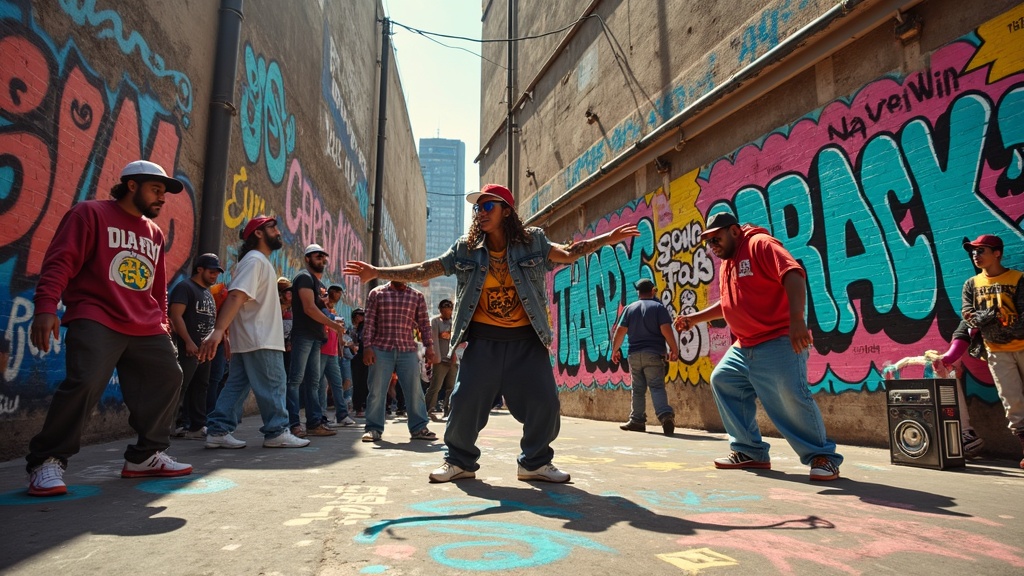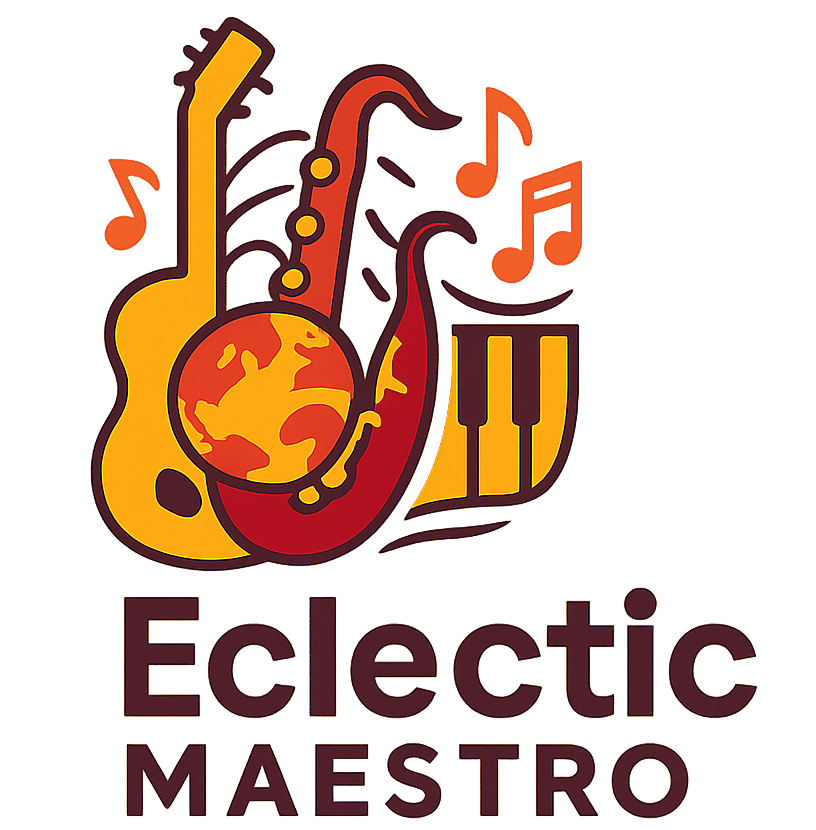Hip hop culture started as a movement among young people searching for their own voice. Over the years, it has transformed from block parties in the South Bronx to a global phenomenon that covers music, art, dance, and even political activism. I’ve been fascinated by how hip hop has shaped not just music but so many aspects of everyday life, influencing fashion, language, social justice efforts, and more. Here’s a look at how hip hop was born and how it’s grown into something much bigger than just a musical style.

The Roots of Hip Hop: The Early Days
Back in the 1970s, the Bronx was a place buzzing with creativity and energy. The neighborhood faced tough times, but it was also full of resourceful kids who wanted to connect, dance, and express what they were feeling. That’s when DJs like Kool Herc came into the picture. Kool Herc is often recognized as the “father of hip hop” because he was one of the first to isolate the break from funk and soul records at block parties, letting dancers, called breakers, really get down to the beat.
It wasn’t just about the music, though. Graffiti artists started painting their names and symbols on subway cars and city walls, turning the city’s landscape into their own canvas. MCs (short for “master of ceremonies”) used their voices to hype up crowds, keep the energy going at these parties, and eventually started rhyming or rapping over the beats. All of this was happening while breakdancers, also known as bboys and bgirls, spun, flipped, and showed off their moves on cardboard mats.
As hip hop grew throughout the city, these connected communities would often compete, using their skills to “battle” each other, whether through dance, rhymes, or painting. These showdowns helped everyone push their creativity further, constantly stepping up the scene. Music, dance, and art became a lifeline and a voice for those whose stories often weren’t heard elsewhere.
The Foundational Elements of Hip Hop Culture
Hip hop isn’t just rap music. It’s made up of four main elements that people refer to as its pillars. Getting to know these can help show why hip hop reached so many people, no matter their background.
- DJing: Mixing and scratching records, setting the mood for the party, and inventing new sounds.
- MCing (Rapping): Using words, often rhymed, to entertain, share stories, or encourage the crowd.
- Breakdancing: An energetic style of street dance with spins, freezes, and acrobatic moves.
- Graffiti Art: Creating murals, tags, and colorful art in public spaces, turning the city into an openair gallery.
One of the things that always grabs my attention is how these four elements worked together to make something positive in an environment with limited resources. Hip hop gave people a creative outlet and a new way to be seen and heard, sparking movements that would spread far beyond the Bronx.
Hip Hop Goes Mainstream
By the 1980s, the wider world started noticing what was happening in New York. Acts like Run DMC, Grandmaster Flash and the Furious Five, and LL Cool J began topping charts. With tracks like “Rapper’s Delight” by the Sugarhill Gang, hip hop was landing on radio stations far outside the Bronx. Breaking (breakdancing) spread fast through movies and TV, inspiring countless teens to grab some cardboard and hit the pavement.
Fashion also took cues from hip hop. Think tracksuits, big sneakers, bucket hats, and chunky chains. I remember seeing these styles turn up everywhere, not just on stage or in videos. Sneaker culture, which is still going strong today, has deep roots in this era. Brands like Adidas teamed up with hip hop stars, locking in the connection between music, style, and streetwear. These partnerships set the stage for the flashy looks and confident attitude we still associate with hip hop today. Accessories like gold chains, big rings, and colorful jackets became symbols of status and originality among fans and performers alike.
In addition to music and fashion, hip hop began popping up in movies and commercials. Films such as “Wild Style” and “Beat Street” gave wider audiences a glimpse into the world of hip hop, while advertisers started using hip hop beats and imagery to sell everything from soda to sneakers. This widespread exposure helped hip hop become a household term, inviting more people worldwide to jump into the culture.
Challenges and Controversies Along the Way
With hip hop’s growing popularity came criticism. Some early tracks were about having fun, but hip hop also started giving artists a way to talk bluntly about issues such as poverty, racism, and violence. This made some people nervous, and ongoing debates started up about whether hip hop was hurting or helping communities.
There have been squabbles inside hip hop as well, including famous “beefs” between artists. These rivalries sometimes fueled creativity, pushing artists to bring their best, but occasionally the conflicts spilled out into real life, drawing headlines for all the wrong reasons. These clashes weren’t just personal; sometimes, they highlighted deeper tensions within communities or the music industry.
Commercialization and Authenticity
As hip hop made more money and spread worldwide, some worried it was losing its roots. Criticism around “selling out” or softening messages for bigger audiences became more common. Still, loads of artists stayed true to the style and focused on using hip hop for good, whether that was storytelling, raising awareness, or building up communities. Independent labels and grassroots movements helped keep the heart of hip hop alive, teaching a new generation the importance of respecting the craft and the culture’s origins.
Censorship and Legal Issues
Lyrics have sometimes landed artists in hot water, with radio stations and politicians arguing about what young people should be hearing. Even though some tracks were banned from airplay, controversy often just made those songs more popular as fans sought out what was being censored. The ongoing debate over free speech versus social responsibility is still talked about in hip hop circles today. These conversations also paved the way for important discussions about artists’ rights, ownership of their music, and the power of unfiltered expression.
Worldwide Expansion and the Modern Era
Once hip hop hit the 1990s and 2000s, there was no putting the genie back in the bottle. Artistdriven labels emerged, new subgenres like gangsta rap and conscious rap developed, and hip hop began influencing musicians in every part of the globe, from France to Japan to South Africa.
Technology also had a lot to do with this growth. The internet made it easy to share new tracks or dance videos instantly. YouTube, SoundCloud, and social media mean anyone can put out music, art, or dance moves and find an audience fast. I’ve stumbled upon plenty of new acts from places I’d never expected, just by scrolling a few hashtags or recommendations.
Local hip hop scenes in cities around the world put their own twists on the style, blending their traditions and issues into the music. For example, grime in the UK, K-hip hop in South Korea, and rap fusions in Africa show just how flexible and powerful hip hop’s core message is. Today, you’ll find millions of artists using smartphones and laptops to craft beats in every language, proving that hip hop’s foundation—creativity and selfexpression—goes well beyond its place of birth.
Hip Hop’s Impact Beyond Music
Hip hop’s influence shows up in more areas than just your playlist. Here are a few ways it pops up in daily life and the world around us:
- Fashion: Hip hop fashion trends have often gone mainstream, with brands designing entire collections inspired by rap stars or street style.
- Language: Slang and phrases from hip hop shape conversation in all sorts of communities. Phrases like “bling” or “on the mic” spill over into regular speech.
- Entrepreneurship: Many rappers and producers have created their own clothing lines, record labels, or even tech startups, inspiring young people to see themselves as more than just artists.
- Social Justice: Hip hop has always been a tool for speaking out about injustice. Many artists use their platform to stand behind causes, register voters, or raise awareness about big issues.
Hip hop’s all-in-one impact goes further still. Its beats get used in commercials and video games. Its fashion sense shows up in highend runways. Hip hop even shapes visual art and literature, with poets and painters borrowing its energy and rhythm to give a boost to their own work.
Common Questions About Hip Hop Culture
I get asked a lot of questions about hip hop, especially from people who haven’t followed its adventure closely. Here are a few that come up often:
How did hip hop start?
Hip hop began at parties in the Bronx in the early 1970s. Young people, DJs, MCs, dancers, and graffiti artists all came together to create a space for expression and fun, which grew into four main elements that define the culture.
Is hip hop just rap music?
Rap is a big piece of hip hop, but the culture is much broader. DJing, breakdancing, and graffiti art are just as important in shaping hip hop’s vibe and legacy.
Can anyone participate in hip hop culture?
Absolutely. Hip hop’s core is about welcoming creativity and selfexpression, no matter your background. All it takes is respect for the culture and a willingness to learn about its roots.
How does hip hop deal with negative stereotypes?
Some aspects of hip hop have faced criticism or misunderstanding, but many artists address social issues directly or use their influence to challenge stereotypes and create change.
Why has hip hop been so influential worldwide?
Hip hop tells real stories and gives a voice to people who might not be heard otherwise. Its mix of music, style, art, and attitude connects across languages and cultures, letting people from different backgrounds find common ground. Plus, the doityourself nature of hip hop means anyone, anywhere, can take part and bring their own flavor to the mix.
What Hip Hop Means Today
Hip hop continues to grow, take on new forms, and mean different things to people everywhere. For some, it’s about spitting clever lyrics. For others, it’s the rush of finding the perfect beat, tagging a new mural, or nailing a wild dance move. I think the real magic lies in how hip hop keeps giving people a way to tell their truths, connect with others, and keep pushing the boundaries of art and culture.
Whether you’re a diehard fan or just getting curious, hip hop’s adventure proves that what starts out local can soon sweep the globe. The culture’s never finished; it’s always changing, and everyone’s invited to join the ride and add their own flair. Hip hop isn’t just a style—it’s a living, breathing, evolving movement that keeps shaping the world in fresh and eye-catching ways every day.
